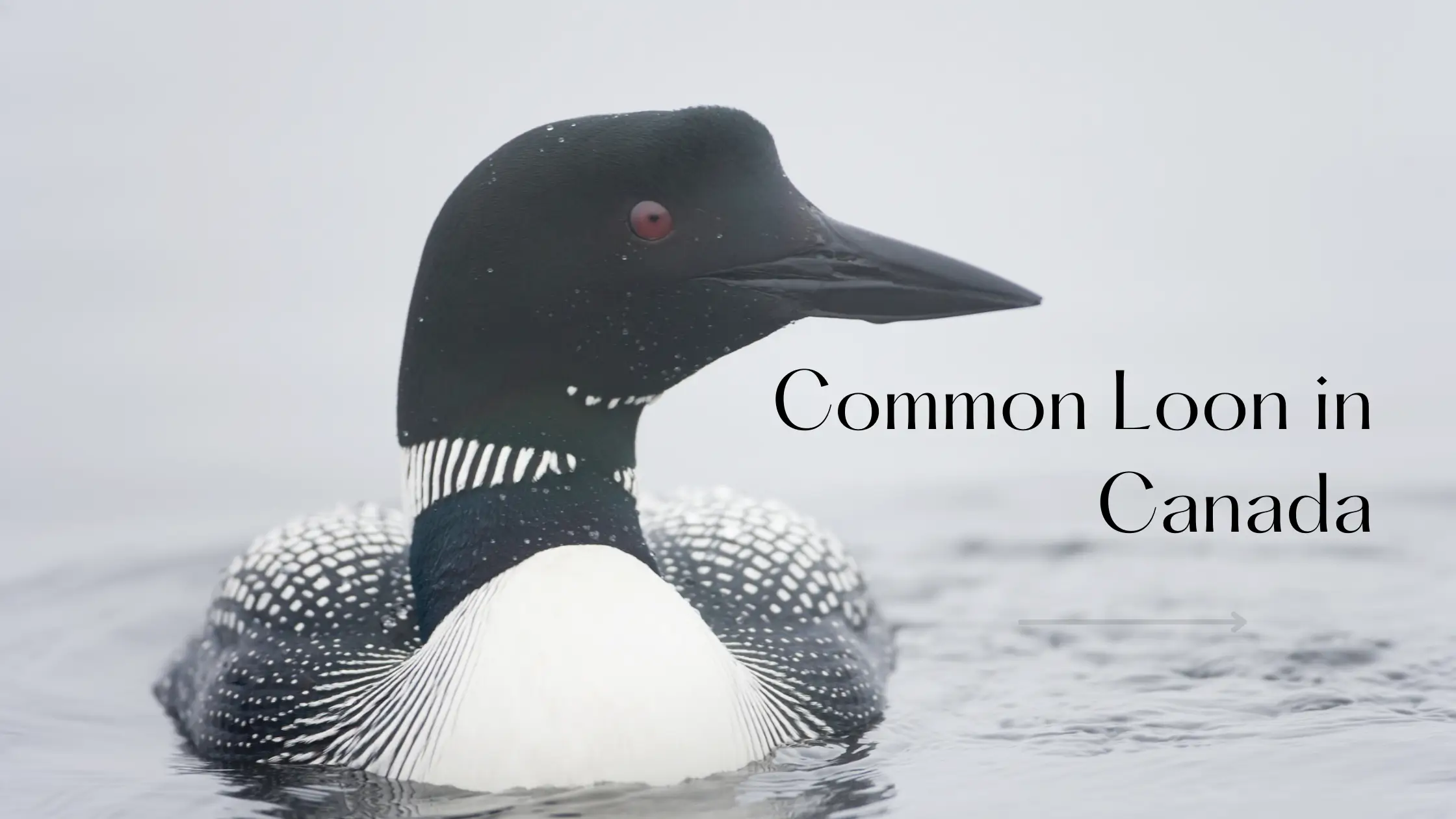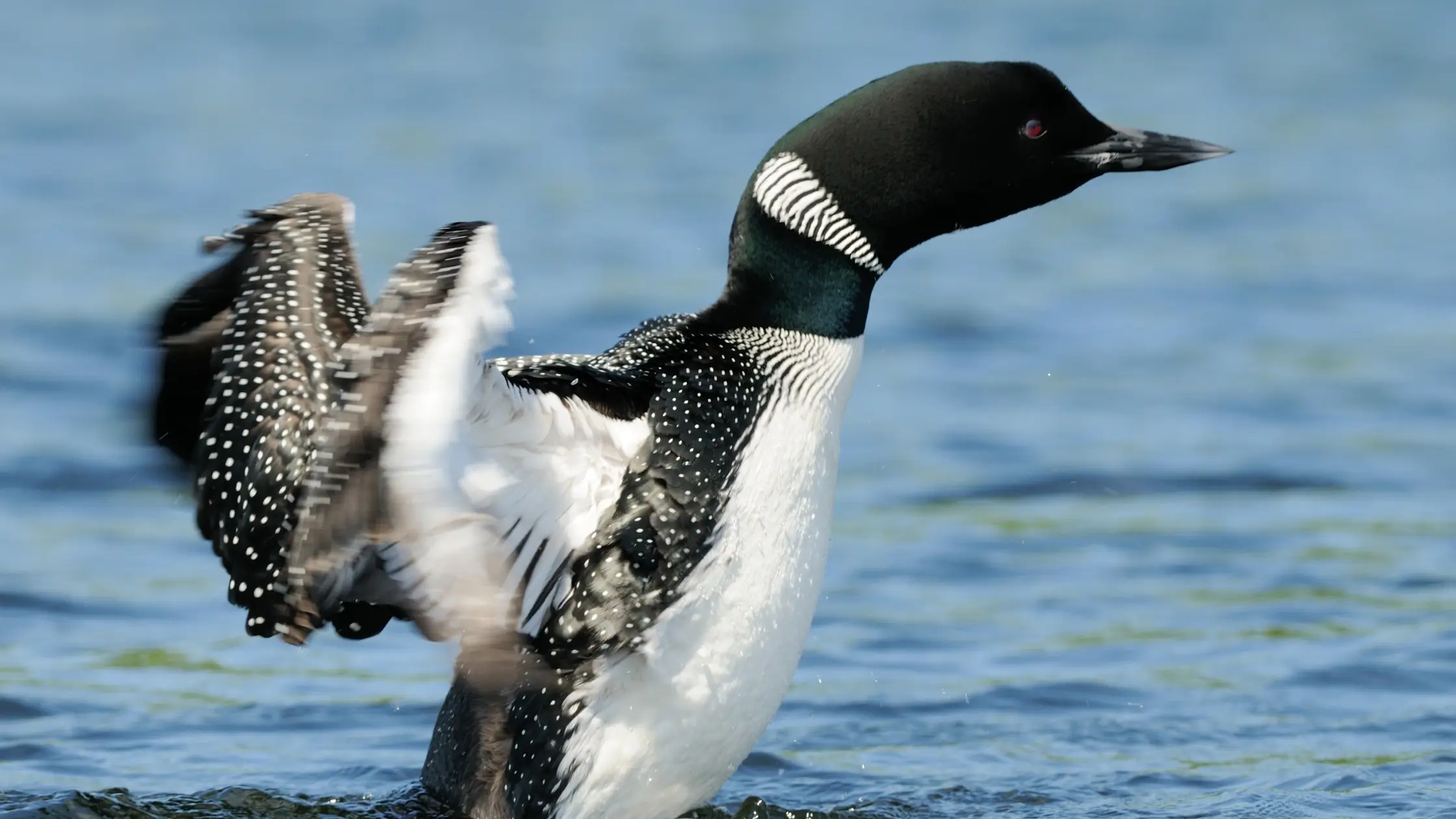The Common Loon is a big, pretty bird with black and white feathers. It makes spooky sounds and mostly lives in lakes. They’re very good at swimming underwater to catch fish and they are frequently seen in Canada. The weird sounds they make are well-known in northern wild places.
The Common Loon is a bird many Canadians love. In summer, loons build nests in the north. The loon reminds many people of Canada’s wild places.
Physical Features and Characteristics
Following is a list of some physical characteristics and features that make the common loon an attractive bird;
| Features | Relevant Information |
| Scientific Name | Gavia immer |
| Life Span | Range from 20 to 30 years |
| Diet | Fishes, Crustaceans, Snails, Leeches, Frogs, Analids and Aquatic insect larvae |
| Wingspan | Around 1.5 meter |
| Average Weight | Lies in between 2.9 to 6.3 kg.
Males being large weighing around 6 kg Females weigh around 5 kg |
| Habitat | Freshwater lakes, Boreal lakes, Wetlands, Large water bay and Islands |
| Status of specie | Not Endangered |
Interesting Facts About Common Loon in Canada
Below are some of the most fascinating facts revealed for these attractive birds that can grab your attention as a visitor;
1. National Symbol
The Common Loon is displayed on the Canadian one-dollar coin known as the “loonie.”
2. Provincial Bird
Ontario has designated the Common Loon as its official provincial bird.
3. Distinctive Call
Loons are known for their haunting, yodel-like calls that echo across Canadian lakes.
4. Diving Masters
Common Loons can dive up to 60 meters deep and stay underwater for up to five minutes.
5. Bone Density
They can easily dive deep into water for catching their prey because of high bone density.
6. Nesting Habits
They build their nests close to the water’s edge and sometimes on floating vegetation.
7. Unique Anatomy
Their legs are positioned far back on their bodies, making them excellent swimmers but awkward on land.
8. Adaptability
They have a special gland that allows them to drink both fresh and salt water.
9. Ecological Indicator
The presence and health of loon populations are often used as indicators of the overall health of aquatic ecosystems.
10. Territorial Behavior
Loons are known to aggressively defend their territory, sometimes engaging in dramatic water-slapping displays.
Subspecies of Common Loon in Canada
There exist 5 sub species of these common loons in canada, which beautify the birds diversity of this country.
-
Arctic Loon
It is smaller than the Common Loon and possess a darker gray head compared to other loon species.
-
Common Loon
This specie has a distinctive black and white checkered pattern on its back. It displays a black head with a white necklace during breeding season.
-
Pacific Loon
This specie of loon carries a distinctly gray-colored nape at back of the neck. It is smaller than the Common Loon with a slimmer bill
-
Re-throated Loon
It is the smallest of the loon species found in Canada. It carries a unique upturned bill and reddish throat patch during breeding season.
-
Yellow Billed Loon
These are classified as largest of the loon species in Canada and have a distinctive pale yellow to ivory-colored bill.
Sightseeing of Common Loon in Canada
Here are some of the common sightseeing places of these Common loons in Canada;
| Direction of the Country | Places Where Common Loons are Found |
| Western Region | British Coloumbia and Alberta |
| Eastern Region | Nova Scotia, Quebec, Newfoundland, New Brunswick, and Labrador |
| Central Region | Manitoba, Saskatchewan and Ontario |
| Northern Region | Nunavut, Northwest Territory, and Yukon |
Pro Tip: They are mostly found around the fresh water lands and lake areas, so these areas should be targeted for capturing their image.
Ideal Seasons and Month to See Common Loons in Canada
Here is the best season to plan a visit for seeing these common loons;
| Season | Months for Sightseeing |
| Spring to Early Summer | April to May |
| Summers | June to September |
Pro Tip: They are mostly spotted at morning and evening times because of their high activity during this time.







